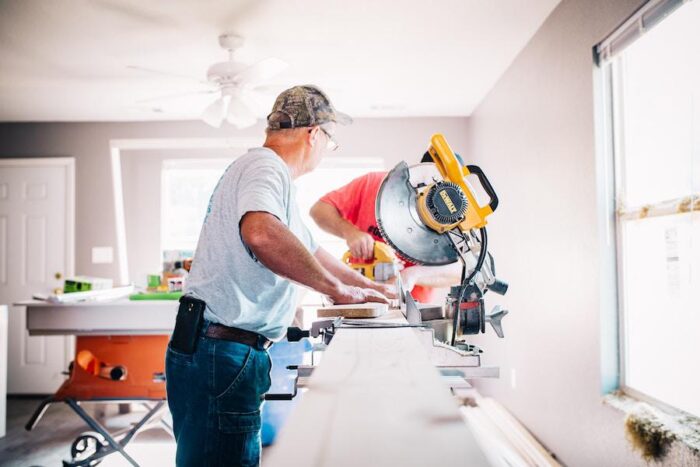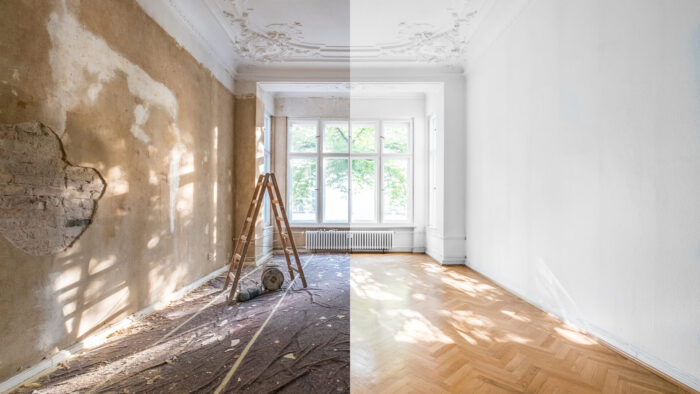
Many handy homeowners turned to become DIY-ers in the middle of a pandemic, stuck at home with nothing to do. The lockdowns may have long ago lifted, and most things have gone back to normal, but many homeowners haven’t put down their hammers or measuring tapes yet.
Bit by the DIY bug, most homeowners are still renovating their homes three years later. By 2026, analysts predict the DIY home improvement market to grow by $121.47 billion.
Why is DIY Still So Popular Today?
You can’t blame the boredom of the pandemic for people’s interest in DIY anymore, nor can lockdown and shelter-in-place measures stop people from having contractors in their homes. With most restrictions gone, people are back to socializing at pre-pandemic levels.
So, why does DIY remain so popular? There isn’t a single answer but three.
1. Some People Enjoy the Challenge
For many homeowners, DIY is a badge of honor; it’s a way to show off their skills and ingenuity. There’s a sense of pride in completing a reno on your own, from start to finish.
2. The Internet is an Excellent Source of Information
It has never been easier to learn about home renovations, now that millions of ideas are at your fingertips online. All you have to do is find the right hashtag on social media to find countless home improvement and renovation influencers sharing their latest projects.
If you aren’t sure how to complete something you see on their profile, you can find several tutorials on YouTube that break down a building technique in detail.
3. Some People Believe DIY is Cheaper
But perhaps the biggest reason why DIY is popular is its affordability. Many influencers praise DIY as a shortcut to saving money, even if they take on larger projects, like kitchen renovations.
Is DIY Really More Affordable?

In theory, DIY promises to save money on any project because you don’t have to hire a professional to renovate your home. However, you might not be able to claim these budgetary bragging rights for your own.
Plenty of things stand in your way.
1. Some Prefab Materials Are Cheaper Than DIY
Back in your grandfather’s day, buying the raw materials to make a bookshelf or bedside table was almost always cheaper than getting it built for you. But now, things are different.
Between globalism and automation, it’s often less expensive to buy something premade than it is to make it yourself.
2. Raw Materials Are Expensive
Have you noticed everything in the hardware store costs more these days? You aren’t imagining things. Hangovers from the pandemic are still impacting labor shortages, and inflation has been especially tough on wood and steel.
DIY means you don’t have to pay a professional on top of your materials. However, these materials have been more expensive, so DIY projects may come with a larger price tag than you expect.
3. DIY Takes Time
Besides the cost of materials, you have to consider the price of your time. While you can complete some projects within a few short hours, others span over the course of several weeks or months. Finding time to complete your project can be hard enough, but it can be especially stressful when your reno demands all your spare time or makes a part of your home unusable.
4. Small DIY Can Turn into a Huge Job

You can start a job expecting one thing and wind up dealing with something completely out of your wheelhouse. That’s because you never know what you’re working with until you pull up floorboards or tear down walls. These invasive steps might reveal you’re dealing with pest infestations, water damage, mould, or even grandfathered building materials like asbestos insulation.
Any one of these issues can tack on thousands of dollars to your original budget. Unfortunately, once you find these things, you can’t put back your floors or walls without dealing with them first. In some cases, it’s a matter of your family’s safety.
If an unexpected and unavoidable renovation costs more than you budgeted for, you might be able to put essential repairs on a line of credit. If you don’t already have an open line of credit, finding one is easy. There are websites like Foracredit.ca that let you apply for a line of credit online at any time, even in the middle of the night.
This convenient timing means you don’t have to delay urgent repairs any longer than you must. Filling out an application only takes a few minutes, which can accelerate how quickly you move on to the next step.
If approved, you can use your line of credit as a safety net for the unexpected.
5. DIY Takes Tools You Don’t Have
DIY is only cheaper when you have a garage full of power tools and equipment. Otherwise, you could blow your budget on buying tools that you need to complete your project.
Depending on your project, you might need a long list of expensive equipment. Some people are willing to invest in these items if they know they’ll use them again regularly. But it might not be worth the cost to buy them new (or even used) if you don’t have any other plans to renovate.
6. You Can Hurt Yourself
Going into a project half-cocked is a sure-fire way to hurt yourself. Unfortunately, this can happen to any DIY-er who takes on specialized projects with unfamiliar tools.
Take electrical work, for example. With the threat of electrocuting yourself if you make a wrong decision, this kind of project is better left to the licensed and insured professionals — even if it costs more.
At their worst, electrical mistakes can cause death. However, even minor accidents can land you in the hospital. You can miss work as you recuperate and need to rely on a line of credit for unexpected medical expenses — not to mention how it may delay how quickly you finish your project.

The Takeaway
While DIY renovations are more popular than ever, it’s not for everyone. Renovating your home can wind up being more costly than you expect, which can make doing it yourself a moot point if you want to save money. Consider this carefully if you have dreams of redesigning your home.
















